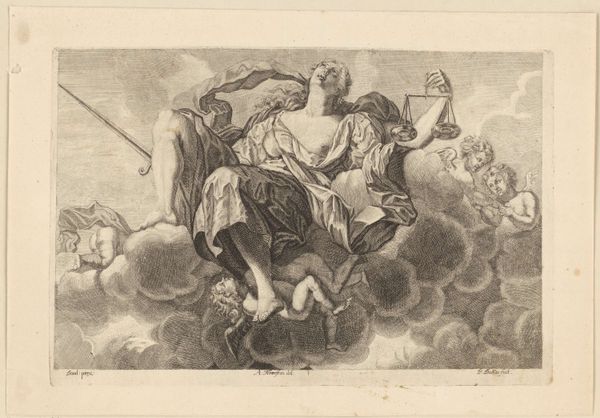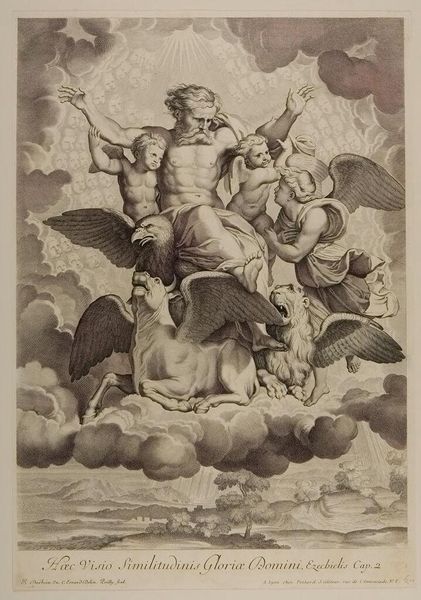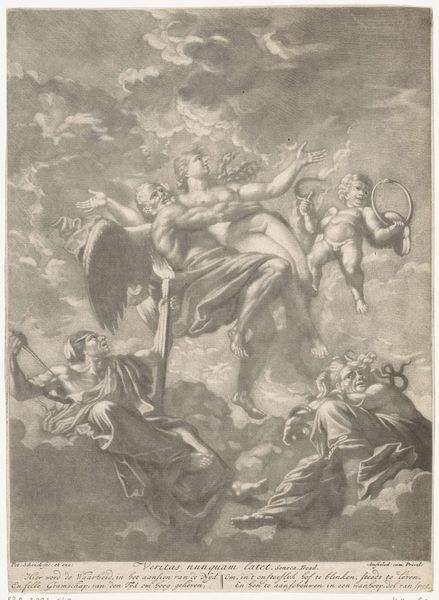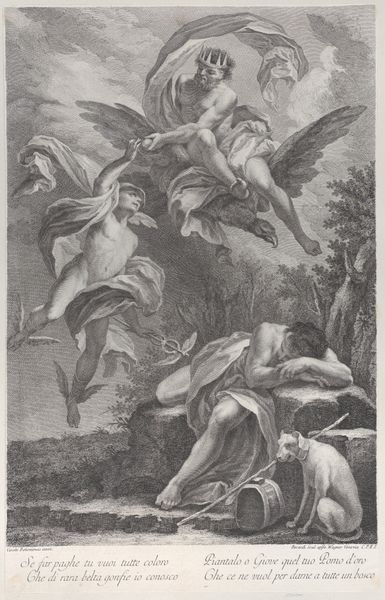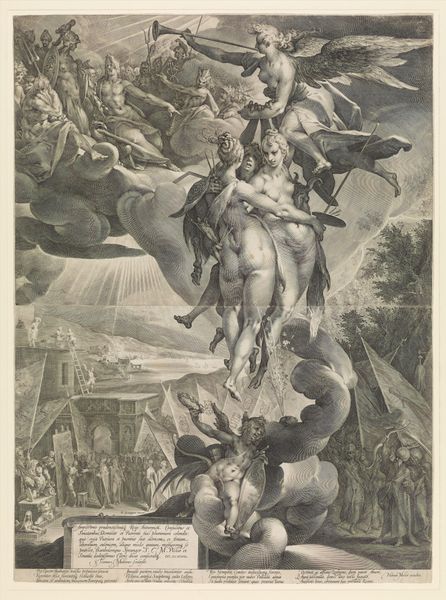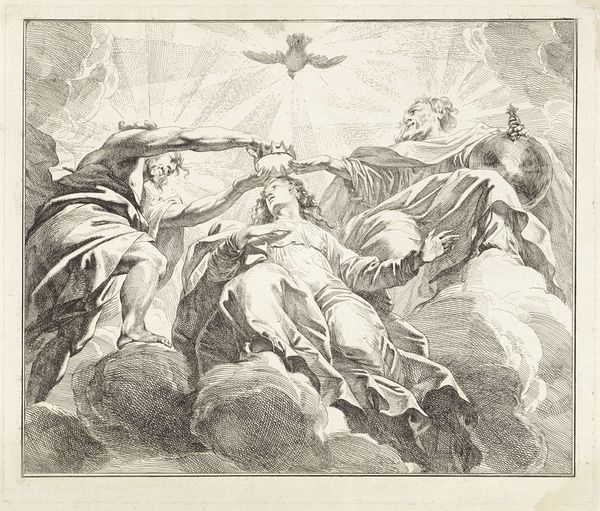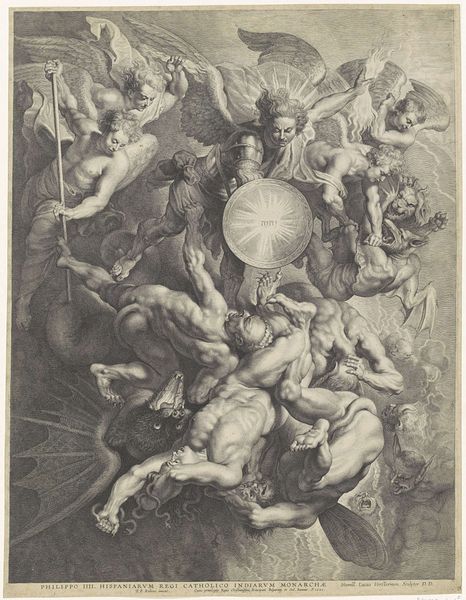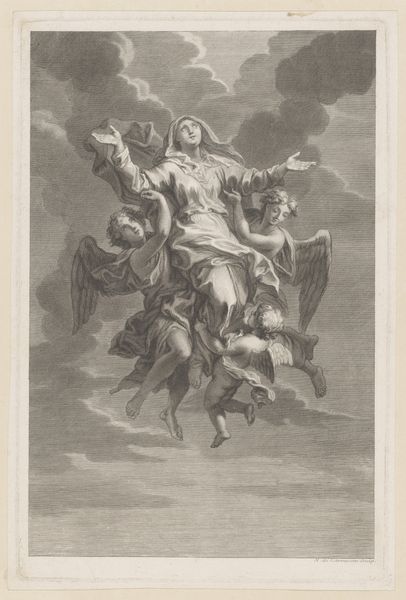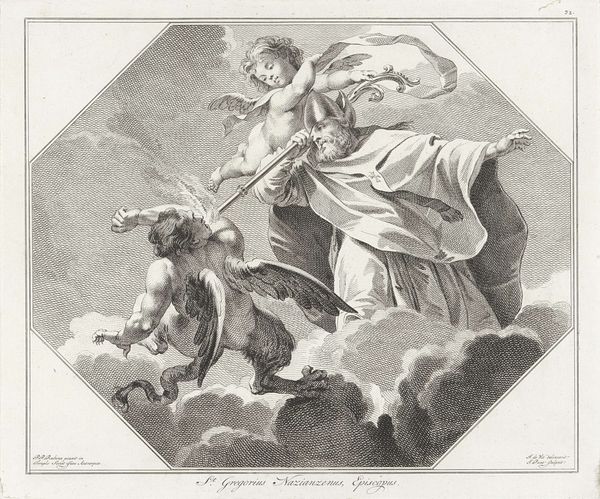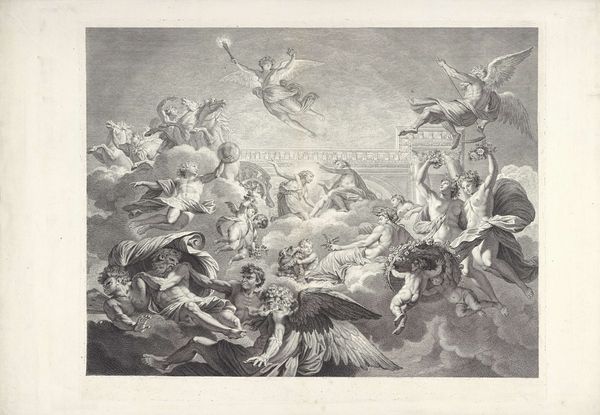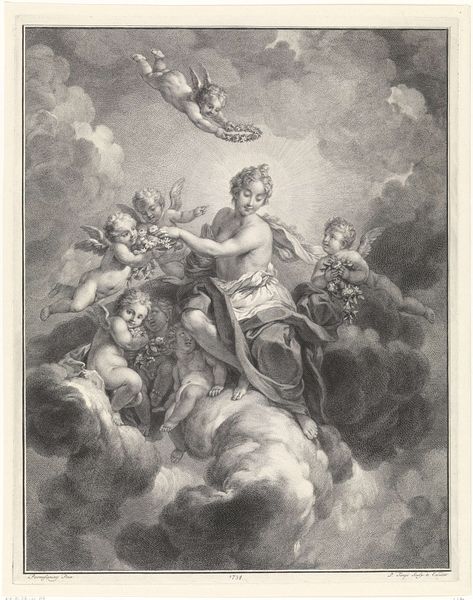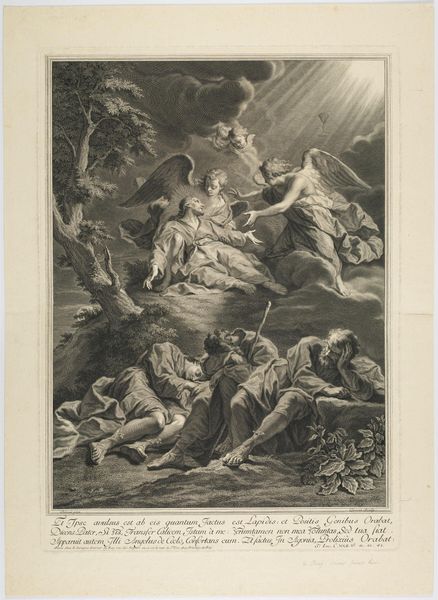
engraving
#
pencil drawn
#
neoclacissism
#
allegory
#
pencil sketch
#
landscape
#
charcoal drawing
#
figuration
#
charcoal art
#
pencil drawing
#
classicism
#
line
#
pencil work
#
history-painting
#
graphite
#
engraving
Dimensions: height 470 mm, width 341 mm
Copyright: Rijks Museum: Open Domain
Giuseppe Longhi made this print called “The Vision of Ezekiel” using burin and etching. This image portrays a biblical vision through the lens of eighteenth-century Neoclassicism. Longhi brings together classical artistic conventions with religious subject matter, which was typical of European art academies at the time. In Italy, these academies were the gatekeepers of artistic taste, promoting specific styles and subjects while excluding others. Note how Longhi renders God with the idealized anatomy of a Greek god. God is also accompanied by cherubic figures, a common motif in both religious and classical art, and he rides a composite of animal forms. These figures draw on established visual codes to lend authority and grandeur to the image. To understand art like this, we need to look at the institutions that shaped its creation. In Longhi's time, that means understanding the role of the academy and the revival of classical ideals. Only through historical research can we understand the true significance of Longhi's artistic choices.
Comments
No comments
Be the first to comment and join the conversation on the ultimate creative platform.
